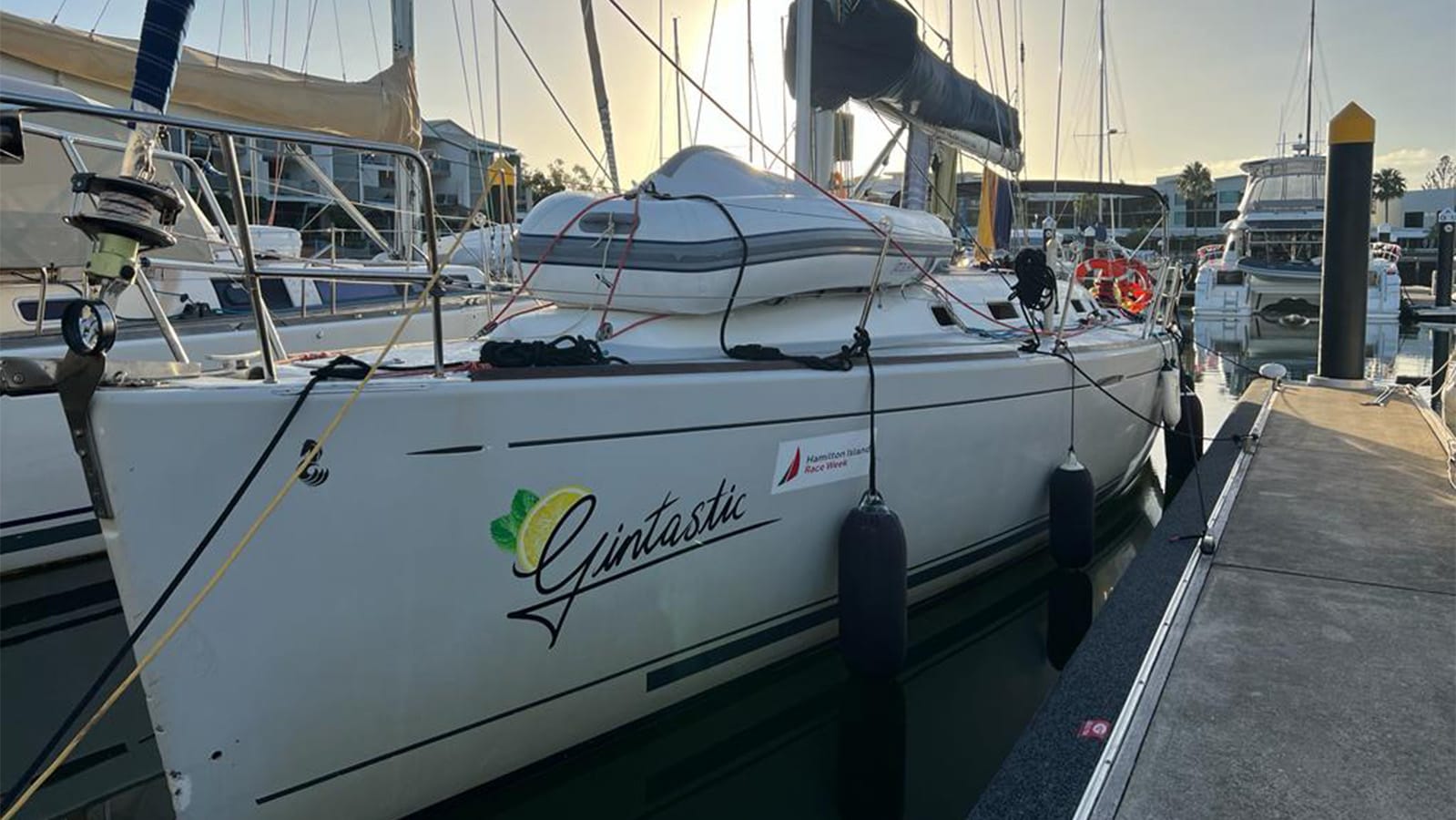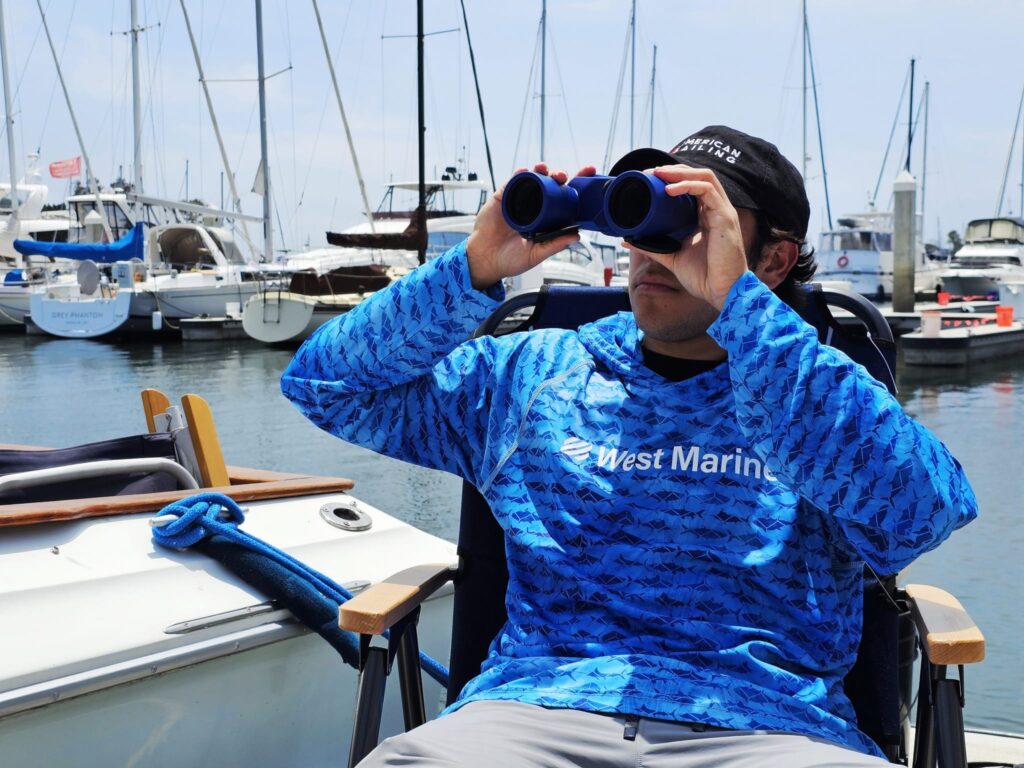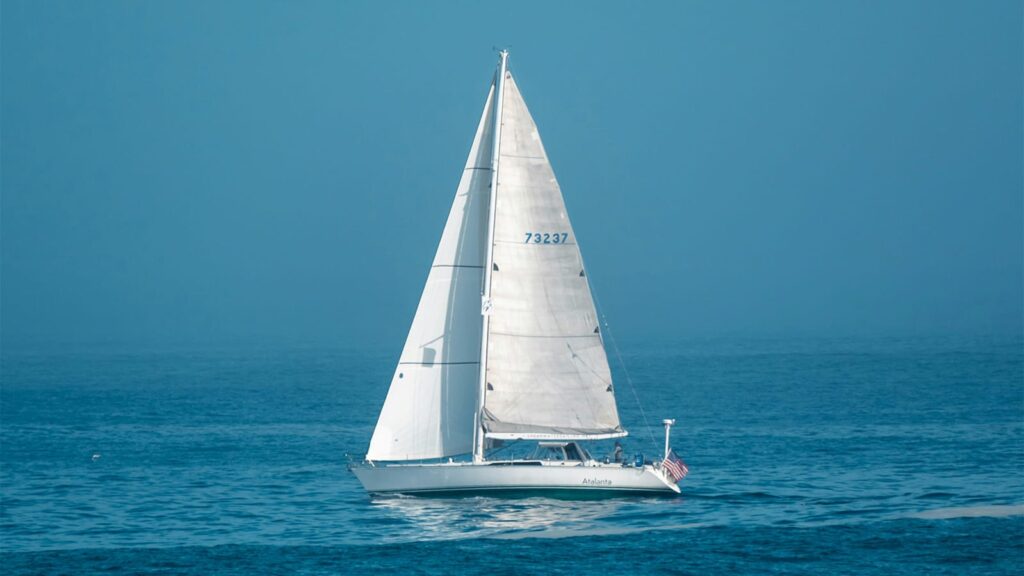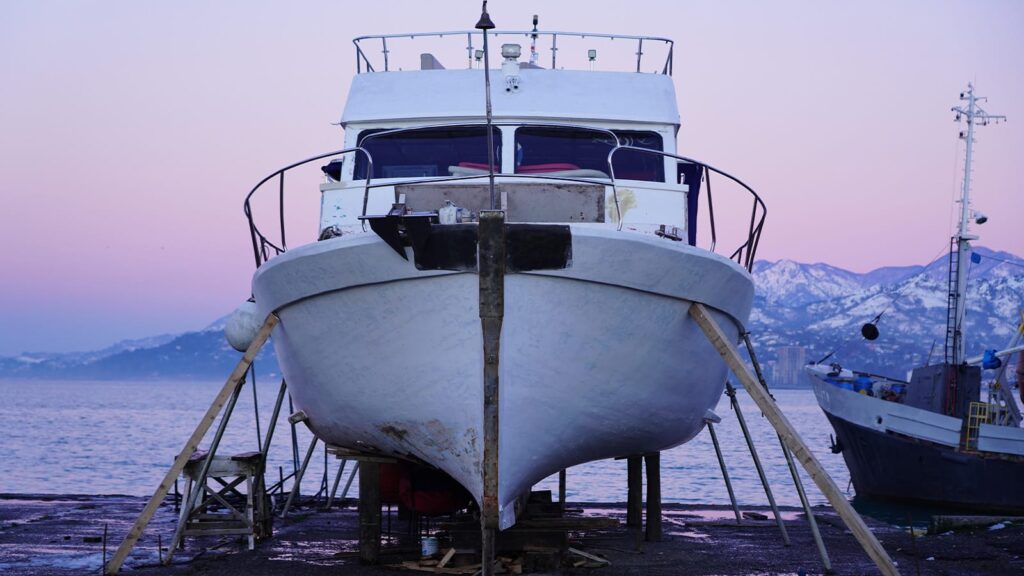By David Killpack
Estimated reading time: 10 minutes
Table of contents
The last Sunday of winter on the Sunshine Coast is putting on a show. Winter is a loose term here in Queensland, Australia; it’s 24°C (75°F), and the sky is so brilliant blue that even the clouds don’t want to interrupt. The ocean is rising and falling like it’s taking deep meditative breaths, inviting a 15-knot wind across its surface. The day is begging sailors to hoist their sails and come ride the ocean.
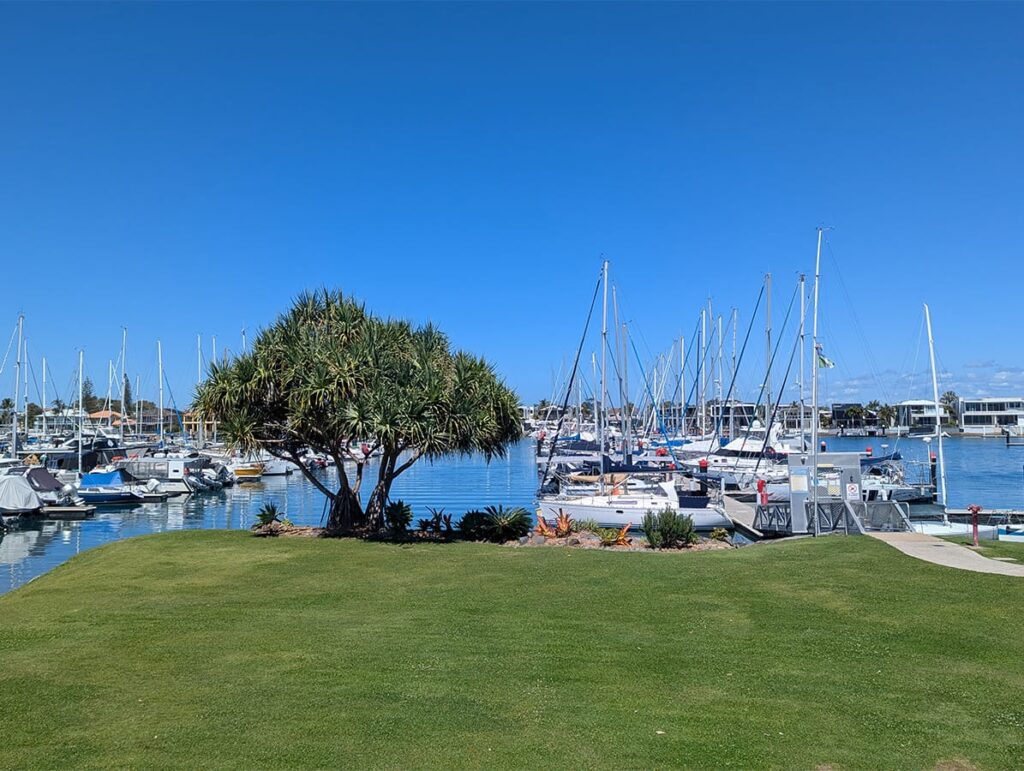
So many boats stay docked, but the real freedom comes when you let go of the lines.
And where am I? In my marina office, waging a losing war against a stack of compliance paperwork that threatens to achieve sentience and overthrow me. The sea breeze through the window is a cruel tease, and I catch myself staring outside like a child in a hot classroom with a teacher lecturing about the Ming Dynasty and its effect on the modern world.
That’s when it hits me: the marina is full. Row after row of magnificent vessels sit tethered to their berths, their lazy bags zipped, and not a single sign of movement onboard. Why in the world are these boats tied up on a day like today? These are supposed to be gateways to pure freedom, but here they are, locked to a dock. How could anyone refuse the call to go sailing today? More to the point, what’s my excuse?
The DPA Dilemma
My experience tells me why many sit still: Dockside Performance Anxiety (DPA). It’s a little-known condition we’ve all faced at some point.
DPA is identified by the transformation of a competent, rational human being into a gibbering, sweat-drenched primate with a death grip on a stainless-steel wheel.
The approach to the dock begins, and a strange metamorphosis occurs. The skipper’s brain, perfectly capable of navigating through shallows and calculating tidal streams moments before, suddenly develops the processing power of a gnat.
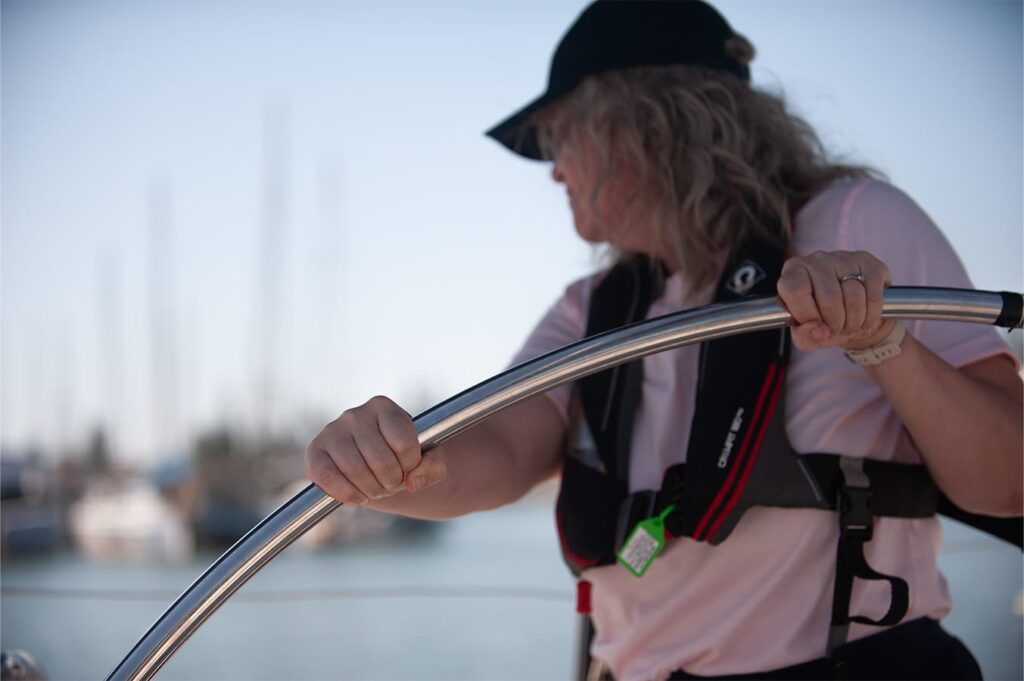
The white-knuckle grip every sailor knows. Dockside Performance Anxiety in action.
The boat, which just spent hours dancing on the sea with the agility of a world-class gymnast, becomes an oil tanker that can’t maneuver its way out of a wet paper sack. A gentle ten-knot blow-on breeze feels like a Category 4 hurricane, and the berth seems to narrow. The neighbors multiply, holding expressions that say, “Oh great, here comes another one.”
It’s not just pressure; it’s Dockside Performance Anxiety, and it’s a powerful paralytic. But don’t worry, there is a cure.
The fundamental mistake so many boaters make is believing they need to practice in a high-stakes boat pinball tournament. They think the only way to learn is by risking their pride, their dignity, and a four-figure gelcoat repair bill right there in the marina.
Would you parallel park between two Ferraris in downtown Chicago without practicing in an open parking lot between cones first? I’m guessing not, so why do that with your boat?
The Glorious Freedom of the Empty Parking Lot
Years ago, I trained firefighters to drive emergency vehicles. We would never let a rookie loose in the narrow city streets without practicing in a wide-open space first. Yet, this is precisely what many boat owners do.
Think of it: no audience, no obstacles, limited consequences. Just you, your boat, and the freedom to get it completely, spectacularly wrong. This is where the magic happens.

From hesitation to motion. Every pulse of power builds confidence. “Giddy Up” Catamaran underway.
We are fortunate to have a wide, calm area just up the river from the marina where our students can play and learn. Occasionally, we’ve gone out into the bay when the river is busy. The wide-open ocean may not be ideal, but it will give you an idea of how your boat handles under power. Hopefully, I have convinced you to start in an open area, away from the berth and fairway, and use deliberate practice.
We teach our students to make the boat do things that seem utterly useless but are incredibly useful. We make the boat spin on its own axis, watch what happens as wind catches the bow, go backwards in a figure-eight, and do “doughnuts.” We simply have them play and get a feel for the boat, both with and without power.
It’s here, in this safe boat playground, where they finally learn how their vessel moves with power through deliberate practice. Even if their boat is a stubborn mule and not a gazelle, at least they know. The problem isn’t having a stubborn mule; the problem is expecting a mule to be a gazelle.
The white-knuckle death grip relaxes into a light, confident touch. You learn that slow is smooth, and smooth is not just fast – it’s downright satisfying.
The Secret: Plan, Position, Pulse
The most powerful thing we can teach in this docking dance is to slow everything down. We use the terms Plan, Position, and Pulse. The premise is simple: think first, move your helm second, and then use small amounts of engine.
Of course, there are times you will need more power, and your deliberate practice will help you recognize those times. What you must avoid is the “Point & Pray” method of docking; that only ends in insurance claims and weekend boat work.
Let’s break it down.
Plan: This is where you use the grey matter between your ears to keep yourself from DPA. Slow the boat, take a breath, and become the director of a very slow-motion action movie. Make a pass by your intended berth when possible. Look at the wind and tide and ask yourself what effect they will have. Use these forces; don’t fight them.
Crucially, plan your escape. What’s your bailout plan if a gust hits or your approach is off? Knowing you have a pre-planned exit strategy drains the panic from the situation. And don’t just have an escape plan – use it. Too many people try to force a bad approach instead of resetting.
Position: Now you engage your hands, but not on the throttle – on the helm. While the boat is barely moving or stopped, you position the rudder for the move you’re about to make. It’s like aiming the garden hose before you turn on the tap.
Pulse: Here’s the heresy: you barely need the throttle, most of the time. Docking disasters are fueled by too much power at the wrong time. All you need is a pulse of power. A deliberate click into gear, with just enough thrust to overcome the forces you identified in your plan.
You are nudging a sleeping giant, not launching a rocket. Each pulse gives you a whisper of movement that you can guide with your pre-positioned rudder. It’s a series of calm, quiet questions to the boat, not a series of shouted, panicked demands.
The Beginning, Not the End
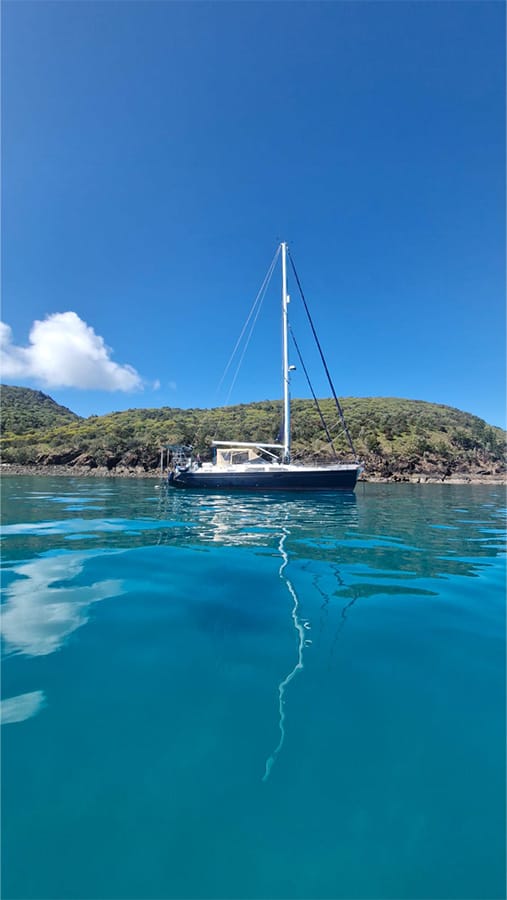
Freedom awaits beyond the dock. Confidence at the helm starts here.
The next time you’re on the dock, looking at your vessel sitting there like a floating hotel you only visit on occasion, remember that the fear of docking is just a story you’re telling yourself. You can write a new one.
It starts by stepping away from the dock, embracing the glorious freedom of the open space, and ingraining the principles of Plan, Position, Pulse.
Because the true freedom of boat ownership isn’t just about the glory of a full-sail reach in a perfect breeze. It’s about the quiet confidence to cast off the lines whenever you please. It’s about transforming that white-knuckle shuffle into a graceful waltz.
This is just the beginning. To truly build your skills, consider taking a dedicated course with a reputable sailing school.
About the Author
David Killpack is the owner of Sunshine Sailing Australia, a school on the Sunshine Coast established in 1989. He began sailing in his early 20s and has been on the water ever since. At 54, with over a decade dedicated to adult sailing education, David is passionate about helping sailors trade Dockside Performance Anxiety for quiet confidence and freedom under sail
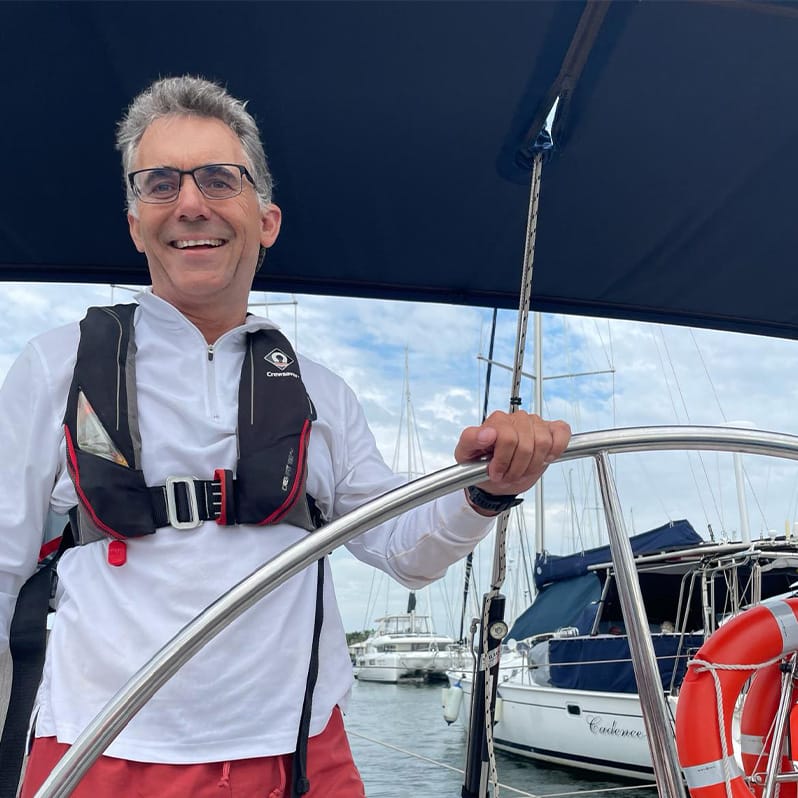
Join The Discussion
-
How do you overcome Dockside Performance Anxiety when docking your boat?
Posted by American Sailing on October 5, 2025 at 1:39 pmhttps://americansailing.com/articles/the-white-knuckle-shuffle/
americansailing.com
Discover how to overcome fear at the dock with practice, patience, and confidence, turning stressful docking into smooth, graceful maneuvers.
Jenny replied 1 month ago 4 Members · 3 Replies -
3 Replies
-
 1,021
1,021
 Ruby
Ruby
 New Sailor
New Sailor
-
 27
27
 Bronze
Bronze
 New Sailor
New Sailor
Having just finished ASA 101 and buying our first boat (1988 Oday 240) this article is very timely. Our berth is the last one on the last slip at our harbor. Making the final turn to get in is one of the hardest parts of the day and I have already been guilty of the panicked “do I go forward or reverse and point the motor left or right” feeling. It went well the first two times and the third needed some reverse thrust and a turn of the motor/rudder to back up and reset. I’m inspired to practice at the open dock at the mouth of the harbor next time to see how smooth we can make the approach before doing it in the confined space now. I think a spring line with a loop sized just long enough to catch the mid cleat and not require wrapping in a hurry will be prepped too.
-
 336
336
 Silver
Silver
 New Sailor
New Sailor
Let us know how it goes for you, Andrew! So many people struggle with docking, and it’s not surprising. It’s just a really challenging task until you do it about 100 times (but it’s a little different with each new boat). When I first got my captain’s license and was preparing to teach ASA classes, my affiliate manager said I wouldn’t really feel comfortable docking until I spent about 3 hours just practicing solo. That was nerve-wracking, but I did it. Sure didn’t help that I had a group of guys with beers at the picnic table raising their glass to me every time I successfully docked, but I got over the major jitters. I still find I have the jitters when docking, but I feel a lot better with that practice. And I love having a midship spring line, especially when coming in solo.
-
Log in to reply.

